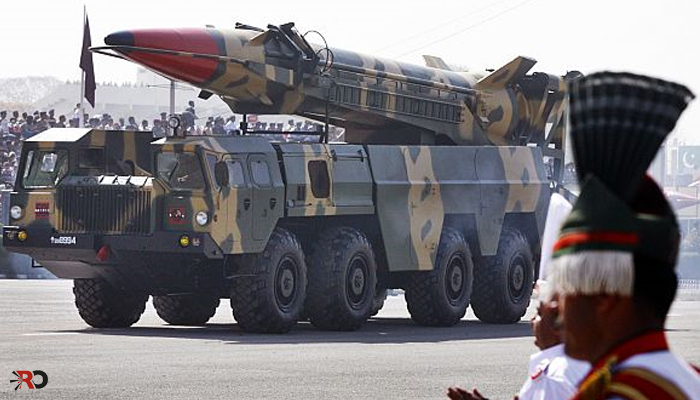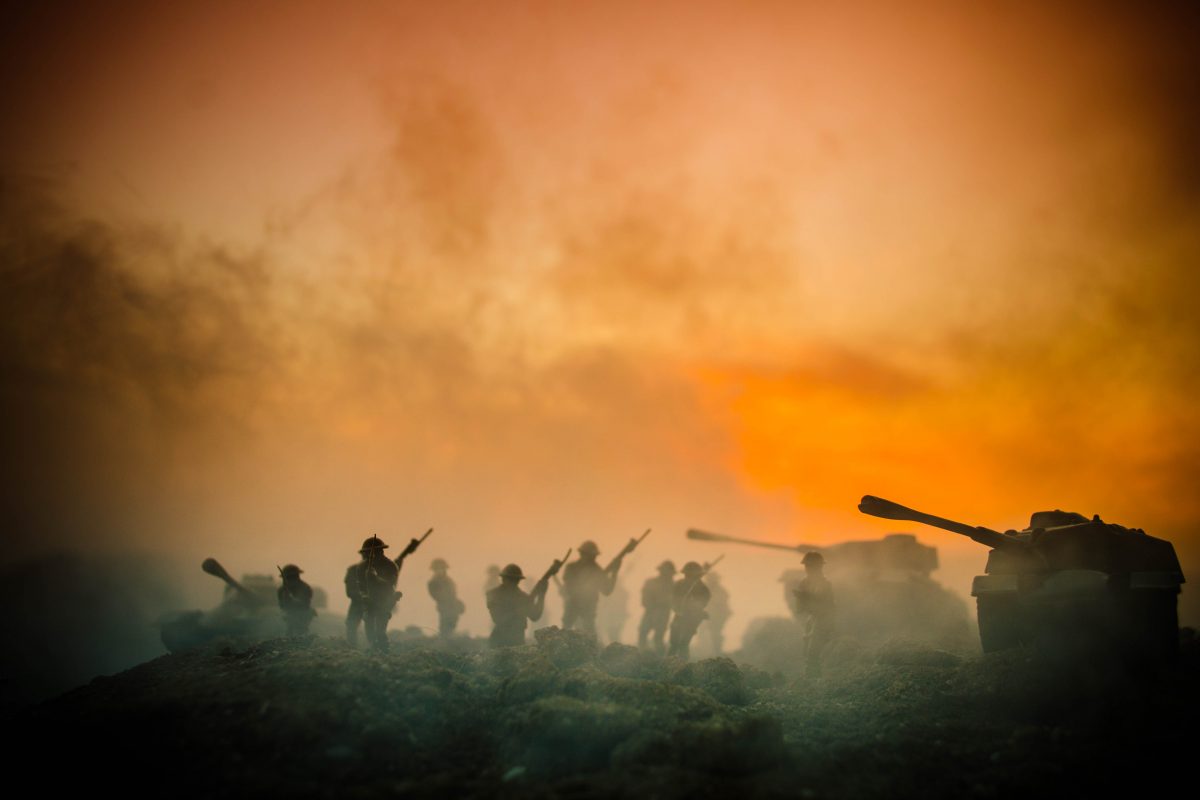By Adnan Khan
Ever since Pakistan tested its first nuclear device in 1998 its nuclear weapons have garnered significant global and media attention. Every move in Kashmir and every attack associated with Pakistan in India usually causes global concern due to the prospects of nuclear conflict. Both counties were involved in a messy divorce in 1947 and engaged in three wars which continue to define relations between them. Pakistan’s military doctrine, has always recognized India was more powerful by almost every metric of military, economic, and political power and that in any situation of war India would quickly outnumber and outgun Pakistan. In this light the October 19th revelation by Pakistani Foreign Secretary Aizaz Chaudhry, that officially confirmed Pakistan’s plans to use low-yield nuclear weapons to impede advancing Indian troops under New Delhi’s “Cold Start” doctrine is a significant development.[1]
Pakistan’s doctrine since its inception has been postured towards India. Throughout the 1965 wars and 1971 Pakistan’s doctrine emphasized static defence of the Line of Control (LOC) and the border. Penetration of Indian territory would be undertaken only on an opportunity basis. However the wars with India showed that because of lack of strategic depth in Pakistan a ‘stand and fight’ doctrine would probably result in deep penetration by Indian forces without Pakistani forces being able to maneuver effectively. In this context Pakistan developed the ‘Riposte doctrine’ which was a limited offensive-defensive posture. The doctrine called for strike corps to take the initiative in a war with India, pushing deep into Indian territory, while other corps hold back the initial Indian advance. This action against a numerically superior enemy relied upon initial momentum and the assumption that the international community would buttress their efforts by stepping in within a few weeks to urge a ceasefire, effectively halting both armies from advancing farther into each other’s territory. Another aspect of Pakistan’s military doctrine has been the ‘strategic depth’ doctrine with regards to Afghanistan. Ensuring a peaceful and secure Afghanistan on its Western border, meant the Pakistani military could fully concentrate on the Eastern borders. Over the last decade Pakistan’s army has been engaged in America’s war in the Northern tribal areas of the country. Under General Ashfaq Kayani’s leadership the country’s strategic doctrine and posture was altered in January 2013, the India centric doctrine was revised and defined internal threats as the greatest risk to the country’s security. America’s war on terror has become the primary focus for the military. 70% of Pakistan’s ground forces however remain on Pakistan’s Eastern border with India, despite this.
[pullquote align=”right” color=”” class=”” cite=”” link=””]In a deteriorating military situation, when an Indian conventional attack is likely to break through Pakistani defences causing a major setback to Pakistan, than the conventional means at Pakistan’s disposal will not eliminate the threat.[/pullquote] From Indian independence in 1947 until 2004, the Indian military had maintained a largely defensive military strategy on the border with Pakistan. For example the “Sundarji Doctrine” – set up by former Indian Chief of the Army Staff Gen. Krishnaswamy Sundarji in the early 1980s was defensive, and relied on utilizing deterrence through the presence of large military formations to ward off incursion from Pakistan. During the 1980s and 1990s, these formations were in large part located deeper inside India. The collapse of the Soviet Union led to a change in India’s security environment, which led to a drive for the development of nuclear weapons and missiles. With Pakistan’s asymmetric capabilities increasing, especially during the Kargil conflict, India enacted the Cold Start doctrine. A far more proactive and aggressive doctrine had the objective of acting offensively against Pakistan in case of a perceived threat. In doing so, India could launch pre-emptive strikes without giving Pakistan time to react militarily. The Indian leadership eventually revised this doctrine due to the possibility of a ‘two-front’ war with China and Pakistan. This doctrine included tanks backed by air cover and artillery fire assaults into enemy territory within 96 hours.
The problem Pakistan’s military leaders have had to contend with is India is four times larger than Pakistan, its armed forces outnumber Pakistan, the ground based branch of India’s armed forces with its 36 division’s numbers in excess of 1 million personnel, which would pose Pakistani forces significant problems. Pakistani leaders have long contended in the event of war between Pakistan and India, the Indian numerical superiority in men and conventional arms is likely to exert pressure beyond endurance on Pakistan. In a deteriorating military situation, when an Indian conventional attack is likely to break through Pakistani defences causing a major setback to Pakistan, than the conventional means at Pakistan’s disposal will not eliminate the threat. Pakistan would need a capability of such potency to balance this imbalance. It was in this context Pakistan developed nuclear weapons. Former Indian Army Chief General Shankar Roychowdhury confirmed that Pakistan’s possession of nuclear weapons prevented India from attacking the country after the terror strikes in Mumbai and the attack on Parliament.[2]
The revelation of Pakistan’s tactical nuclear weapons development adds to its asymmetric approach with India’s growing conventional capability. Using low-yield tactical nuclear weapons on India’s armoured formations within its own territory, Pakistan aims to deter or defeat India’s thrusts without breaching India’s no first use nuclear policy and risking a wider escalation into a strategic nuclear exchange that might include non-military targets such as cities. But introducing battlefield nuclear weapons greatly lowers the threshold of using nuclear weapons in a potential large-scale conflict while raising the possibility of a full nuclear exchange on the Indian subcontinent. India has sought to negate Pakistan’s strategy by announcing that any use of nuclear weapons, including battlefield ones, would technically breach it’s no first use policy, allowing it to retaliate with its own nuclear weapons. Due to India’s disproportionate conventional capability a nuclear device of whatever kilotons is the only way Pakistan can face-off with India and this development raises numerous questions about nuclear warfare.
This new development will likely worry much of the world as Pakistan’s nuclear weapons have for long worried much of the world. For many, deploying tactical nuclear weapons across diffuse forward units would weaken command and control, increasing potential non-sanctioned use of Pakistan’s tactical nuclear weapons because of miscalculation at the early stages of an Indo-Pakistani conflict. But this new development is Pakistan adapting to the regional balance of power as India shifts towards a more aggressive and offensive doctrine.
[2] http://www.expressindia.com/latest-news/Paks-Nbomb-prevented-Indian-retaliation-after-26-11/432730/





